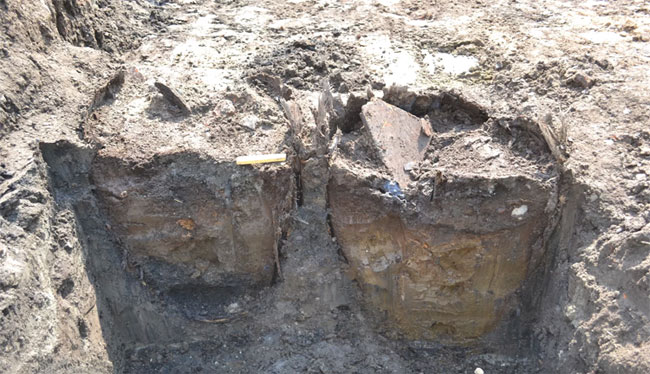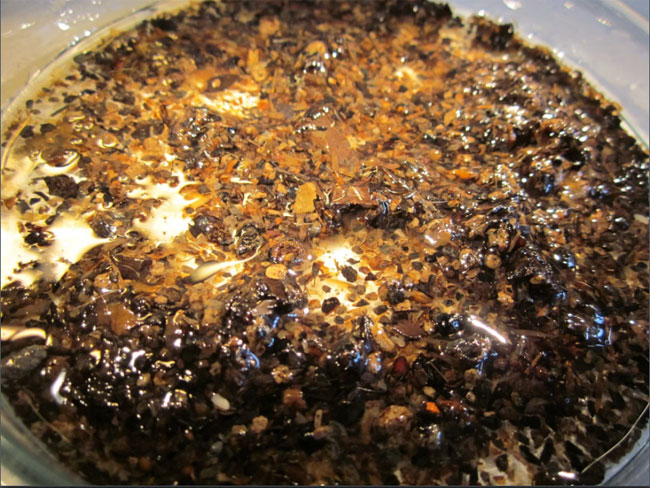Use wine barrels as a Renaissance toilet
About 300 years ago (stage 1680), after drinking the last drops of two giant wine jars, someone came up with a creative idea to rationally reuse them - burying empty containers Go to the ground in the backyard of a house and turn them into toilets.
It was the discovery of a group of archaeologists during an excavation in Copenhagen before the site was turned into a construction site.
Contrary to the reluctance of many people to step into a 300-year-old toilet , scientists conducted research and screened the remaining organic compounds to look for clues to the diet, Commercial contacts and habits of those who used them long ago. This result was published in the Journal of Archaeological Science.

The idea of using jars of wine as a toilet for the Copenhageners during the Renaissance.
'According to our research, they often eat bread, fish, meat, and a variety of fruits, herbs and spices. Most of these foods are indigenous products, but some have to be imported overseas, such as cloves (from Indonesia) - showing that the Danes may have access to regional products. The Far East through Dutch trading companies, because Indonesia was a Dutch colony, and Dutch merchants once lived in Copenhagen in the 1680s ″ - senior researcher Marie Hald Mette, specializing in environmental archeology at the Danish National Museum, said. 'It is interesting to know that we have been a link of the global trading network for more than 300 years,' said Hald.
When analyzing the specimens, the archaeological team used both microscopes and naked eyes (if the leftover object was large enough) to learn about the diet of the Renaissance people. And one thing is for sure, those who have used this toilet have a fairly healthy and varied diet. Studies of animal bones and seeds showed that they ate a lot of herring and rye bread. In addition, they may also have eaten other types of fish such as eels, cod and perch, besides lots of fruits and herbs, including apples, raspberries, cherries, dill and coriander.

Trace the existence of plants in the toilet area.
In an email to Live Science, Hald wrote: ' We also found traces of certain fruits such as figs, raisins and lemon peels - coming from the Mediterranean and often drying them to avoid being damaged on the way. Shipping to the North '.
Besides the toilet function, it is also used as a trash can to dump leftovers - this explains the appearance of cattle bones."We also found cat bones, which doesn't mean they ate cat meat, but perhaps someone threw a dead cat's body into a bin after sweeping the yard," Hald added.
'Although there is a rich diet, it seems that these people have not often cooked enough food. The results of microscopic research show the presence of certain types of parasites inside the toilet - they come from unripe food or because the user has not washed his hands before eating and is contagious. eat'. However, this phenomenon was quite common at the time. In addition, regarding parasites, 'our research also found that the Copenhagen diet in the 1680 period was actually quite complicated,' said Hald.
- Casually discovered treasures worth more than 200 billion in the kitchen of a French lady
- 6 things not to do when going to the toilet
- Learn the facts startled to the toilet makes everyone surprised
- The secret to opening wine without tools you must know!
- Intelligent urinating: no need to go to the toilet, have self-cleaning system
- The toilet does not need toilet paper
- The way to preserve wine has opened
- Ancient Christian wine factory in Egypt
- Stunned with the luxury toilet in the Forbidden City
- Smart toilet for the sick
- Wine made from ... tomatoes
- Tips to improve wine taste
 Discovered an ancient centipede fossil 99 million years old
Discovered an ancient centipede fossil 99 million years old Discovered bat-like dinosaurs in China
Discovered bat-like dinosaurs in China Discovered a 200-year-old bronze cannon of the coast
Discovered a 200-year-old bronze cannon of the coast Discover 305 million-year-old spider fossils
Discover 305 million-year-old spider fossils